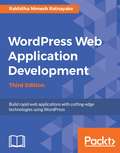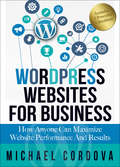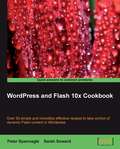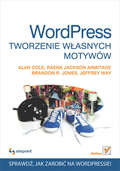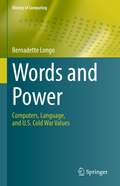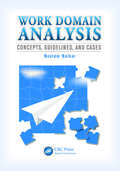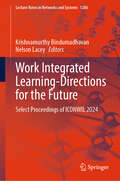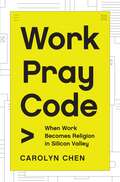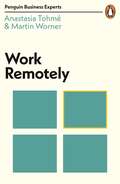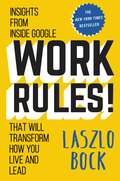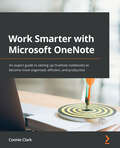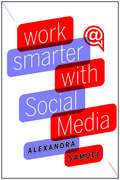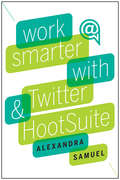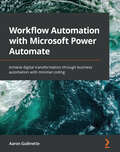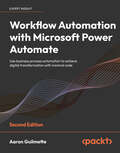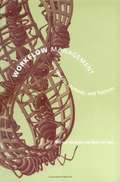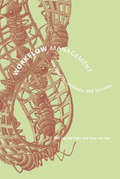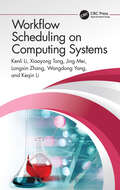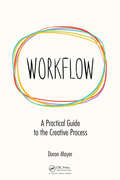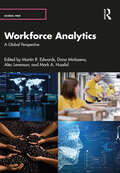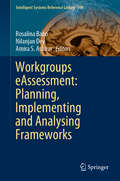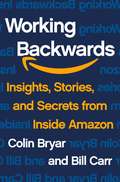- Table View
- List View
Wordpress Web Application Development - Third Edition
by Rakhitha Nimesh RatnayakeLearn in easy stages how to rapidly build leading-edge web applications from scratch. About This Book • Develop powerful web applications rapidly with WordPress • Explore the significant features and improvements introduced in WordPress 4.7 by learning the numerous tips and techniques in this book. • Unleash the power of REST API endpoints to make your interaction with websites new and innovative. Who This Book Is For This book is targeted at WordPress developers and designers who want to develop quality web applications within a limited time frame and maximize their profits. A prior knowledge of basic web development and design is assumed. What You Will Learn • Develop extendable plugins with the use of WordPress features in core modules • Develop pluggable modules to extend the core features of WordPress as independent modules • Manage permissions for a wide range of content types in web applications based on different user types • Follow WordPress coding standards to develop reusable and maintainable code • Build and customize themes beyond conventional web layouts • Explore the power of core database tables and understand the limitations when designing database tables for large applications • Integrate open source modules into WordPress applications to keep up with the latest open source technologies • Customize the WordPress admin section and themes to create the look and feel of a typical web application In Detail WordPress is one of the most rapidly expanding markets on the Web. Learning how to build complex and scalable web applications will give you the ability and knowledge to step into the future of WordPress. WordPress 4.7 introduces some exciting new improvements and several bug fixes, which further improve the entire development process.This book is a practical, scenario-based guide to expanding the power of the WordPress core modules to develop modular and maintainable real-world applications from scratch. This book consistently emphasizes adapting WordPress features into web applications. It will walk you through the advanced usages of existing features such as access controlling; database handling; custom post types; pluggable plugins; content restrictions; routing; translation; caching; and many more, while you build the backend of a forum management application. This book begins by explaining how to plan the development of a web application using WordPress' core features. Once the core features are explained, you will learn how to build an application by extending them through custom plugin development. Finally, you will explore advanced non-functional features and application integration. After reading this book, you will have the ability to develop powerful web applications rapidly within limited time frames. Style and approach An extensive, practical guide that explains how to adapt WordPress features, both conventional and trending, for web applications.
Wordpress Websites for Business: How Anyone Can Maximize Website Performance and Results
by Michael CordovaA website development pioneer gives business owners—from tech savvy to beginner—the tools, knowledge, and tactics to succeed in today’s online economy.If your company is building a new website, you’re certainly thinking about content and design. But don’t forget performance, especially if you need your website to generate business leads and sales. Wordpress Websites for Business guides you through the process of building a website that will sustain and grow your company. Using the techniques detailed in this book I am currently bringing in more than one million dollars’ worth of leads a month for one of my clients.I have used most of the top content management systems and built many custom CMS systems myself. From my experience, I can say that Wordpress is the most effective tool available to build your company’s website and bring in leads and sales for your business. However, if used incorrectly, it can actually hurt your company. I’ve seen it happen, and the effects can be devastating. The good news is that there’s a better way. In an easy-to-follow, step-by-step program, this book will tell you what you need to do to avoid the pitfalls while ensuring maximum exposure, search engine rankings, and conversions (sales)!This powerful book features: game changing checklists and resources; simple settings that only take a few minutes, but can make a huge difference in website performance; the best Wordpress plugins and services to optimize your site and maximize leads; the best Wordpress themes that enable you to build an up-to-date website that performs for you; content creation hacks such as how to map your business goals directly to your content; Wordpress best practices simplified, such as why and how to create a child theme; the tools and techniques that drop your page load times to less than two seconds; and much more . . .The strategies and tactics I present in Wordpress Websites for Business will result in more leads and sales for your company, and that’s what it’s all about.
Wordpress and Flash 10x Cookbook
by Peter Spannagle Sarah SowardThis book consists of a series of easy-to-follow recipes. Each recipe stands on its own, so you can open the book to any recipe and complete it without going through the previous recipes. You can work through the book from start to end or just choose the recipes most applicable to your needs and situation. The book presents recipes of varying difficulty levels so that there is something for everyone from a beginner to an advanced WordPress user. Detailed screenshots, code examples, and links to additional resources supplement the concise instructions. If you are a Wordpress user interested in creating multimedia-rich websites and blogs using Flash then this book is perfect for you. This book caters for site administrators and web developers, who have experience using Flash aand Wordpress.
Wordpress. Tworzenie w?asnych motywów
by Alan Cole Brandon Jones Raena Jackson Armitage Jeffrey WaySprawd?, jak zarobi? na WordPressie! Jak skonstruowany jest mechanizm szablonów?Jak tworzy? motywy zgodnie z prawem?
Words and Power: Computers, Language, and U.S. Cold War Values (History of Computing)
by Bernadette LongoWhen viewed through a political lens, the act of defining terms in natural language arguably transforms knowledge into values. This unique volume explores how corporate, military, academic, and professional values shaped efforts to define computer terminology and establish an information engineering profession as a precursor to what would become computer science. As the Cold War heated up, U.S. federal agencies increasingly funded university researchers and labs to develop technologies, like the computer, that would ensure that the U.S. maintained economic prosperity and military dominance over the Soviet Union. At the same time, private corporations saw opportunities for partnering with university labs and military agencies to generate profits as they strengthened their business positions in civilian sectors. They needed a common vocabulary and principles of streamlined communication to underpin the technology development that would ensure national prosperity and military dominance. investigates how language standardization contributed to the professionalization of computer science as separate from mathematics, electrical engineering, and physicsexamines traditions of language standardization in earlier eras of rapid technology development around electricity and radiohighlights the importance of the analogy of “the computer is like a human” to early explanations of computer design and logictraces design and development of electronic computers within political and economic contextsforegrounds the importance of human relationships in decisions about computer designThis in-depth humanistic study argues for the importance of natural language in shaping what people come to think of as possible and impossible relationships between computers and humans. The work is a key reference in the history of technology and serves as a source textbook on the human-level history of computing. In addition, it addresses those with interests in sociolinguistic questions around technology studies, as well as technology development at the nexus of politics, business, and human relations.
Work Domain Analysis: Concepts, Guidelines, and Cases
by Neelam NaikarIn complex sociotechnical systems such as military, health care, and nuclear power systems, poor performance or errors resulting from inadequate designs can have catastrophic consequences. Although considered challenging to learn and execute well, work domain analysis can be used as a framework to assist in the design of these systems. Work Domain
Work From Home: 50 Ways to Make Money Online Analyzed
by Michael EzeanakaMichael Ezeanaka, provides a step-by-step analysis of 50 business models that have the potential to earn you passive income. A quick overview of each business is presented and their simplicity, passivity, scalability and level of competition in the marketplace are explored.
Work Integrated Learning-Directions for the Future: Select Proceedings of ICONWIL 2024 (Lecture Notes in Networks and Systems #1206)
by Krishnamurthy Bindumadhavan Nelson LaceyThis book delves into the comprehensive domain of work-integrated learning, presenting a collection of insights and research on diverse aspects that shape its landscape. With a keen focus on international perspectives and innovative approaches, this book aims to foster a deeper understanding of the intersection between academia and industry. This book presents a comprehensive and forward-thinking exploration of work-integrated learning, blending international perspectives, innovative pedagogies, digital transformations, AI leverage, and a focus on the future workforce. It involves sharing research findings and innovative ideas, as well as discussing challenges and practical solutions in the field of Work Integrated Learning.
Work Pray Code: When Work Becomes Religion in Silicon Valley
by Carolyn ChenHow tech giants are reshaping spirituality to serve their religion of peak productivitySilicon Valley is known for its lavish perks, intense work culture, and spiritual gurus. Work Pray Code explores how tech companies are bringing religion into the workplace in ways that are replacing traditional places of worship, blurring the line between work and religion and transforming the very nature of spiritual experience in modern life.Over the past forty years, highly skilled workers have been devoting more time and energy to their jobs than ever before. They are also leaving churches, synagogues, and temples in droves—but they have not abandoned religion. Carolyn Chen spent more than five years in Silicon Valley, conducting a wealth of in-depth interviews and gaining unprecedented access to the best and brightest of the tech world. The result is a penetrating account of how work now satisfies workers’ needs for belonging, identity, purpose, and transcendence that religion once met. Chen argues that tech firms are offering spiritual care such as Buddhist-inspired mindfulness practices to make their employees more productive, but that our religious traditions, communities, and public sphere are paying the price.We all want our jobs to be meaningful and fulfilling. Work Pray Code reveals what can happen when work becomes religion, and when the workplace becomes the institution that shapes our souls.
Work Remotely (Penguin Business Experts Series)
by Martin Worner Anastasia TohméRemote working makes us happier, more productive and more profitable, but it can bring its own set of challenges. How do we manage our work-life balance; communicate and collaborate effectively as teams; and ensure our technology is efficient?In Work Remotely, Penguin Business Experts Anastasia Tohmé and Martin Worner explain everything you need to know:- Set your own targets and monitor productivity- Establish boundaries between working hours and free time- Manage effective communication and decision-making at a distanceIncluding case studies from the companies around the world who are innovating and revolutionizing the way we work, Work Remotely shares useful advice and practical tips to ensure you get the most out of working away from the office environment.
Work Rules!: Insights from Inside Google That Will Transform How You Live and Lead
by Laszlo BockNEW YORK TIMES BESTSELLER WALL STREET JOURNAL BESTSELLER From the visionary head of Google's innovative People Operations--a groundbreaking inquiry into the philosophy of work and a blueprint for attracting the most spectacular talent to your business and ensuring the best and brightest succeed. "We spend more time working than doing anything else in life. It's not right that the experience of work should be so demotivating and dehumanizing. " So says Laszlo Bock, head of People Operations at the company that transformed how the world interacts with knowledge. This insight is the heart of WORK RULES!, a compelling and surprisingly playful manifesto with the potential to change how we work and live. Drawing on the latest research in behavioral economics and with a profound grasp of human psychology, Bock also provides teaching examples from a range of industries--including companies that are household names but hideous places to work, and little-known companies that achieve spectacular results by valuing and listening to their employees. Bock takes us inside one of history's most explosively successful businesses to reveal why Google is consistently rated one of the best places to work in the world, distilling 15 years of intensive worker R&D into delightfully counterintuitive principles that are easy to put into action, whether you're a team of one or a team of thousands. Cleaving the knot of conventional management, some lessons from WORK RULES! include: Take away managers' power over employees Learn from your best employees--and your worst Only hire people who are smarter than you are, no matter how long it takes to find them Pay unfairly (it's more fair!) Don't trust your gut: use data to predict and shape the future Default to open: be transparent, and welcome feedback If you're comfortable with the amount of freedom you've given your employees, you haven't gone far enough WORK RULES! shows how to strike a balance between creativity and structure, leading to success you can measure in quality of life as well as market share. Read it to build a better company from within rather than from above; read it to reawaken your joy in what you do.
Work Smarter with LinkedIn
by Alexandra SamuelIf you think LinkedIn is just for job hunting, you're missing out on the many ways you can take advantage of this social network to build the professional relationships you need to advance in your career. LinkedIn can help you initiate, strengthen, and use the very real human connections that make you effective on the job-and help you get ahead. This short, practical book shows you how.In Work Smarter with LinkedIn, social media expert Alexandra Samuel demonstrates the most effective ways to actively build and use your network, sharing tips and tricks on: Deciding which connection invitations to accept Searching for potential connections when you need to establish a new contact Using business travel to make the most of face time with colleagues and contacts Capturing all the connections you've made at a conference When not to use LinkedInThe book also includes a 30-minute quick guide to starting-or perfecting-your LinkedIn profile.Interested in learning more about how social media can help you get ahead of your daily work-and get ahead in your career? Look for more in this series of short, digital books from Harvard Business Review Press and social media expert Alexandra Samuel. Other installments provide the best tips and tricks for using tools like Evernote, Twitter, HootSuite, and Gmail to get organized and improve your performance on the job.
Work Smarter with Microsoft OneNote: An expert guide to setting up OneNote notebooks to become more organized, efficient, and productive
by Connie ClarkOrganize work and home life using notes from your phone or computer to supercharge your productivity with this OneNote manualKey FeaturesLearn how to store notes that include images, audio, videos, links, files, emails, and web clippingsUnleash the magic of tags to make notes stand out and become more searchableDiscover the power of shared notebooks with your team or family to ensure everyone is in the loopBook DescriptionDo you want to take your information and note organization to a new level? This book will show you how to use Microsoft's organizational app, OneNote, to store endless amounts of information in a productive and organized way, including solutions for creating your notes and then sharing them easily with your team or department.You'll be guided through everything you need to set up a notebook and customize it to suit you or your team. The book will show you how to navigate through OneNote and search for virtually anything, as well as save time with all the shortcuts. You'll discover that inserting information into your notebooks goes far beyond text, images, and videos, and also includes emails, links to documents, and clippings from the web. But it doesn't stop there. Integration with other Microsoft products is key for making your experience successful, and this book demonstrates how to use OneNote with Microsoft Outlook, OneDrive, SharePoint and Teams. Beyond instructions and essential topics, this book also provides you with the motivation you need to make OneNote a habit as well as real-life examples of notebooks you can use.By the end of this book, you'll be able to use OneNote for everything and from every device. Even if you start a notebook on your laptop and continue it on your phone, you'll find working with the app seamless.What you will learnUnderstand how to create and organize notes in your notebooksDiscover how to turn handwritten notes into typed textExplore how to access your content from anywhere even if offlineUncover ways to collaborate with your team or family and stay in syncUnderstand how to insert your emails, documents, or articles from the webFind out how to integrate with other Microsoft products such as Outlook or TeamsWho this book is forIf you save notes on your phone, wear out more spiral notebooks than you can count, or if you're a Microsoft 365 user and need to keep track of information, then this book is for you. Beginner-level experience with OneNote is required to get the most out of this book.
Work Smarter with Social Media
by Alexandra SamuelFrom managing email to building a social media presence, making smart use of technology is essential to professional success in a digital world. But using all these tools can quickly lead to digital overload. In this comprehensive guide from social media expert Alexandra Samuel, you'll find out how to use the social web to achieve your professional goals-without letting it overwhelm you.Find out what social media power users do to: Tame the email backlog and focus on the messages that matter most Build professional relationships that advance your career using Twitter and LinkedIn Increase your professional visibility online by using HootSuite to schedule social media updates Keep your most important work front-and-center with a digital notetaking system Integrate these tools to get the most out of each one, and make them even more powerful together
Work Smarter with Twitter and HootSuite
by Alexandra SamuelYou're on Twitter but can't keep up with the onslaught of incoming messages. You're also not sure how to extract value from this social media phenomenon-especially as a professional tool.In Work Smarter with Twitter and HootSuite, social media expert Alexandra Samuel helps you take Twitter to the next level by using the free tool HootSuite, which allows you to focus on the people whose tweets matter to you and easily establish the relationships and presence you want.This short, practical book shows you the most effective ways to use this popular system to: Focus on the people and relationships that are the most important to you professionally Set up your own "relationship dashboard" to track tweets that matter Keep your incoming Twitter stream free of clutter Tweet the right messages at the right time-and even schedule your tweets in advanceThis ebook also includes a 30-minute quick guide to setting up your complete Twitter and HootSuite system for maximum ease of use.Interested in learning more about how social media can help you get ahead of your daily work-and get ahead in your career? Look for more in this series of short, digital books from Harvard Business Review Press and social media expert Alexandra Samuel. Other installments provide the best tips and tricks for using tools like Evernote, Twitter, HootSuite, and Gmail to get organized and improve your performance on the job.
Work Smarter, Rule Your Email
by Alexandra SamuelIf you're looking for a way to more effectively manage your inbox, your email program's built-in filtering tools can do a lot of the heavy lifting-and this short book by social media expert Alexandra Samuel shows you how to set them up. Samuel walks you through tools and tips for: Using your email program's filing and rules capabilities to allow you to focus on the messages that matter most right away while automatically storing others you want to read and respond to later Creating a daily process for checking your email that works for you-and eliminates the temptation to respond to every message as it comes in Working through a backlog of messages that have already accumulated.By reducing the amount of time you spend on email, you'll be able to focus your time and attention on the work that matters most to you.The book also includes a 30-minute quick guide to setting up your first email filter, getting you on your way to a cleaner, more manageable inbox.Interested in learning more about how social media can help you get ahead of your daily work-and get ahead in your career? Look for more in this series of short, digital books from Harvard Business Review Press and social media expert Alexandra Samuel. Other installments provide the best tips and tricks for using tools like Evernote, Twitter, HootSuite, and Gmail to get organized and improve your performance on the job.
Workflow Automation with Microsoft Power Automate: Achieve digital transformation through business automation with minimal coding
by Aaron GuilmetteFind our new updated edition to get the latest industry knowledge at your disposalKey FeaturesLearn the latest in Power Automate with updated user interface visuals and new technology includedApply practical knowledge like managing user inputs, documents, approvals, and database storageCreate flows that integrate with services both inside and outside the Microsoft 365 ecosystemBook DescriptionMicrosoft Power Automate is a workflow automation solution included in Microsoft 365. This book explores the core concepts of workflow automation, such as working with connectors, triggers, and actions, along with their practical implementation in automating business tasks and simplifying digital processes to boost enterprise productivity.What you will learnLearn the basic building blocks of Power Automate capabilitiesExplore connectors in Power Automate to automate email workflowsDiscover how to make a flow for copying files between cloud servicesConfigure Power Automate Desktop flows for your business needsBuild on examples to create complex database and approval flowsConnect common business applications like Outlook, Forms, and TeamsLearn the introductory concepts for robotic process automationDiscover how to use AI sentiment analysisWho this book is forThe book is for technologists, system administrators, and Power users with little or no Microsoft Power Automate experience. Familiarity with basic Microsoft 365 services is expected.
Workflow Automation with Microsoft Power Automate: Use business process automation to achieve digital transformation with minimal code, 2nd Edition
by Aaron GuilmetteMake your organization more productive and simplify your workflow by using Microsoft Power Automate for business process automationKey FeaturesLearn the latest in Power Automate with updated user interface visuals and new technology includedApply practical knowledge like managing user inputs, documents, approvals, and database storageCreate flows that integrate with services both inside and outside the Microsoft 365 ecosystemBook DescriptionMS Power Automate is a workflow automation tool built into MS 365 to help businesses automate repetitive tasks or trigger business processes without user intervention. It is a low-code tool that is part of the Microsoft applications framework, the Power Platform.If you are new to Power Automate, this book will give you a comprehensive introduction and a smooth transition from beginner to advanced topics to help you get up to speed with business process automation. Complete with hands-on tutorials and projects, this easy-to-follow guide will show you how to configure automation workflows for business processes between hundreds of applications, using examples within Microsoft and including third-party apps like Dropbox and Twitter. Once you understand how to use connectors, triggers, and actions to automate business processes, you'll learn how to manage user input, documents, and approvals, as well as interact with databases. This edition also introduces new Power Automate features such as using robotic process automation (RPA) to automate legacy applications, interacting with the Microsoft Graph API, and working with artificial intelligence models to do sentiment analysis.By the end of this digital transformation book, you'll have mastered the basics of using Power Automate to replace repetitive tasks with automation technology.What you will learnLearn the basic building blocks of Power Automate capabilitiesExplore connectors in Power Automate to automate email workflowsDiscover how to make a flow for copying files between cloud servicesConfigure Power Automate Desktop flows for your business needsBuild on examples to create complex database and approval flowsConnect common business applications like Outlook, Forms, and TeamsLearn the introductory concepts for robotic process automationDiscover how to use AI sentiment analysisWho this book is forThis book is excellent for information workers and Power users who are looking to automate repetitive tasks for their organizations or for projects they are undertaking. To make the most of this book you should have some basic exposure to the MS 365 platform.
Workflow Management: Models, Methods, and Systems
by Wil Van der Aalst Kees Van HeeThis book offers a comprehensive introduction to workflow management, the management of business processes with information technology. By defining, analyzing, and redesigning an organization's resources and operations, workflow management systems ensure that the right information reaches the right person or computer application at the right time. The book provides a basic overview of workflow terminology and organization, as well as detailed coverage of workflow modeling with Petri nets. Because Petri nets make definitions easier to understand for nonexperts, they facilitate communication between designers and users. The book includes a chapter of case studies, review exercises, and a glossary.
Workflow Management: Models, Methods, and Systems (Information Systems)
by Kees Van HeeThis book offers a comprehensive introduction to workflow management, the management of business processes with information technology. By defining, analyzing, and redesigning an organization's resources and operations, workflow management systems ensure that the right information reaches the right person or computer application at the right time. The book provides a basic overview of workflow terminology and organization, as well as detailed coverage of workflow modeling with Petri nets. Because Petri nets make definitions easier to understand for nonexperts, they facilitate communication between designers and users. The book includes a chapter of case studies, review exercises, and a glossary. A special Web site developed by the authors, www.workflowcourse.com, features animation, interactive examples, lecture materials, exercises and solutions, relevant links, and other valuable resources for the classroom.
Workflow Scheduling on Computing Systems
by Kenli Li Keqin Li Xiaoyong Tang Jing Mei Longxin Zhang Wangdong YangThis book will serve as a guide in understanding workflow scheduling techniques on computing systems such as Cluster, Supercomputers, Grid computing, Cloud computing, Edge computing, Fog computing, and the practical realization of such methods. It offers a whole new perspective and holistic approach in understanding computing systems’ workflow scheduling. Expressing and exposing approaches for various process-centric cloud-based applications give a full coverage of most systems’ energy consumption, reliability, resource utilization, cost, and application stochastic computation. By combining theory with application and connecting mathematical concepts and models with their resource management targets, this book will be equally accessible to readers with both Computer Science and Engineering backgrounds.It will be of great interest to students and professionals alike in the field of computing system design, management, and application. This book will also be beneficial to the general audience and technology enthusiasts who want to expand their knowledge on computer structure.
Workflow: A Practical Guide to the Creative Process
by Doron MeirA pro isn’t just a person who can do it well. It’s a person who can do it well every time, on demand and on deadline; which is why the key to being a professional creative is having a great creative process. Whether it’s writing a book, animating a shot, designing a game level or composing a soundtrack—ultimately, we’re all facing similar challenges. Since we share challenges, we can also share solutions. This book is a practical guide, featuring a universal creative process that can streamline any serious creative work, on any scale. Key Features Universal approach: applies to any process that starts with an idea and ends with a refined product. Profound and light: combines conceptual ideas with practical tips and fun anecdotes. Caricatures and samples: helps visually clarify ideas and processes. Variety of creative fields: draws on examples from writing, animation, game design, 3D modeling, music, sculpting and more Printable summaries: provides visual outlines that can be used as cheat-sheets.
Workforce Analytics: A Global Perspective (Global HRM)
by Martin R. Edwards, Dana Minbaeva, Alec Levenson, and Mark A. HuselidWorkforce Analytics: A Global Perspective provides a comprehensive sweep of key issues facing the evolving discipline of workforce analytics. The editors, all globally recognized in this field, have curated a collection of unique pieces that introduce workforce analytics, discuss its place in the HR sphere, and systematically address the key practical challenges faced by analytics experts working in and with organizations. Drawing on the combined expertise of the editors and a range of practicing expert contributors, the book provides a current, cutting-edge, and multi-perspective survey of workforce analytics. The contributions examine why workforce analytics is important, how it can help contribute to business success, and the considerations businesses need to address to maximize the benefit of this important HR expertise. A breakthrough text in a game-changing emerging discipline, the book is an essential resource for practitioners, students, and researchers in workforce analytics, people analytics, and human resource management more broadly.
Workgroups eAssessment: Planning, Implementing and Analysing Frameworks (Intelligent Systems Reference Library #199)
by Nilanjan Dey Amira S. Ashour Rosalina BaboThis book was developed during a particular pandemic situation in the whole world which confined people to their homes. Therefore, there was a rise in the use of distance working and learning (e-learning) which led to a very quick adoption of technology in order to guarantee different approaches to fulfil the same or better outcomes and ensure that people are connected. This book provides a better understanding about the importance of teams' assessment and collaborative work, as well as the use of collaboration tools and online assessment techniques supported by technology. Consequently, the book is aimed at all institutions that seek new working environments, namely higher education institutions, companies and organizations, sports teams, and others. Furthermore, this book provides new approaches and systems to carry the knowledge and learning assessment. The book gathers knowledge from several authors, related to collaboration environments and tools, as well as their insights on how technology can be applied to carry assessment processes. The book seeks to provide knowledge on new technologies and different learning environments.
Working Backwards: Insights, Stories, and Secrets from Inside Amazon
by Colin Bryar Bill CarrWorking Backwards is an insider's breakdown of Amazon's approach to culture, leadership, and best practices from two long-time Amazon executives.Colin started at Amazon in 1998; Bill joined in 1999. In Working Backwards, these two long-serving Amazon executives reveal and codify the principles and practices that drive the success of one of the most extraordinary companies the world has ever known. With twenty-seven years of Amazon experience between them, much of it in the early aughts—a period of unmatched innovation that brought products and services including Kindle, Amazon Prime, Amazon Studios, and Amazon Web Services to life—Bryar and Carr offer unprecedented access to the Amazon way as it was refined, articulated, and proven to be repeatable, scalable, and adaptable.With keen analysis and practical steps for applying it at your own company—no matter the size—the authors illuminate how Amazon’s fourteen leadership principles inform decision-making at all levels and reveal how the company’s culture has been defined by four characteristics: customer obsession, long-term thinking, eagerness to invent, and operational excellence. Bryar and Carr explain the set of ground-level practices that ensure these are translated into action and flow through all aspects of the business.Working Backwards is a practical guidebook and a corporate narrative, filled with the authors’ in-the-room recollections of what “Being Amazonian” is like and how it has affected their personal and professional lives. They demonstrate that success on Amazon’s scale is not achieved by the genius of any single leader, but rather through commitment to and execution of a set of well-defined, rigorously-executed principles and practices—shared here for the very first time.
